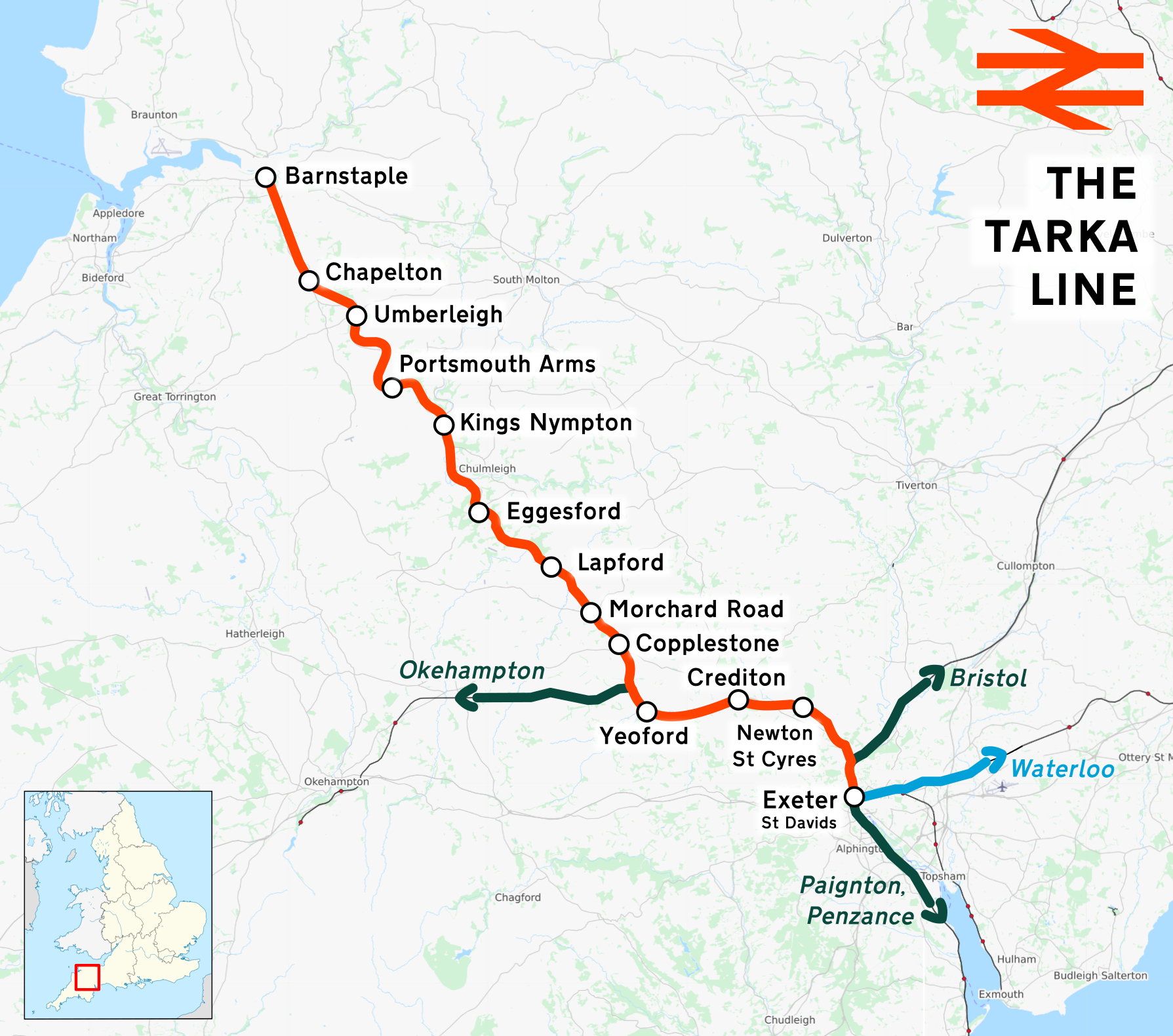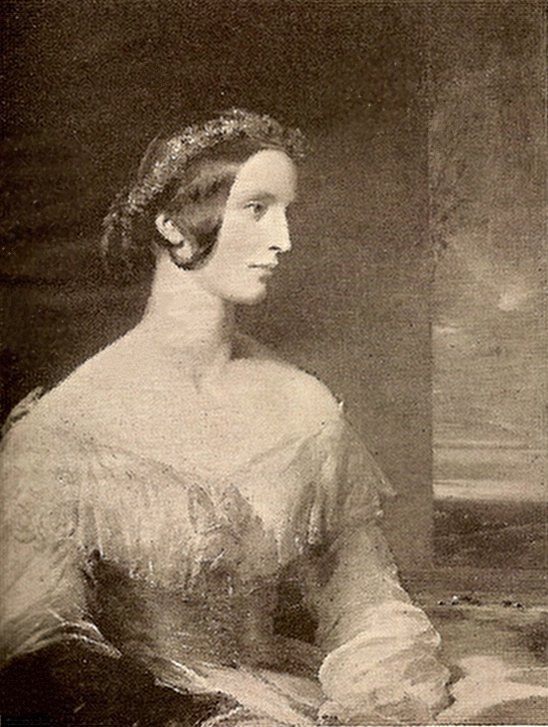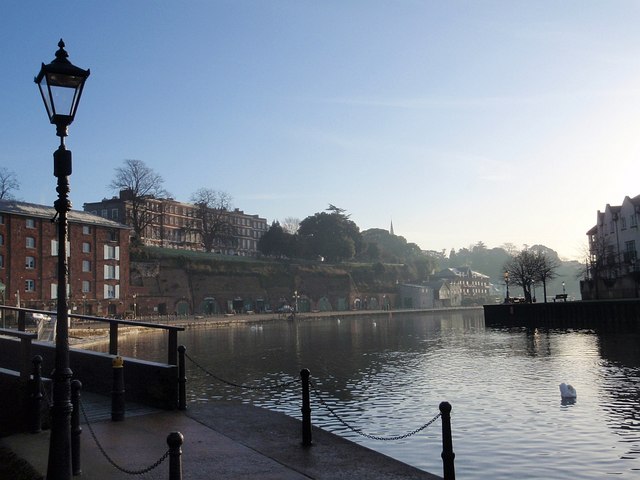|
Tarka Line
The Tarka Line, also known as the North Devon Line, is a local railway line in Devon, England, linking the city of Exeter with the town of Barnstaple via a number of local villages, operated by Great Western Railway (GWR). The line opened in 1851 from Exeter to Crediton and in 1854 the line was completed through to Barnstaple. The line was taken over by the London and South Western Railway (LSWR) in 1865 and later became part of the Southern Railway and then British Rail. In 2001, following privatisation, Wessex Trains introduced the name ''Tarka Line'' after the eponymous character in Henry Williamson's book '' Tarka the Otter''. The line was transferred to First Great Western in 2006. It is one of the railway lines supported by the Devon and Cornwall Rail Partnership and passenger numbers on the line have more than tripled since 2001. History Background and construction The first proposals relating to what would become the Tarka Line originated in the 1820s, when ... [...More Info...] [...Related Items...] OR: [Wikipedia] [Google] [Baidu] |
River Taw
The River Taw () rises at Taw Head, a spring on the central northern flanks of Dartmoor, crosses North Devon and at the town of Barnstaple, formerly a significant port, empties into Bideford Bay in the Bristol Channel, having formed a large estuary of wide meanders which at its western end is the estuary of the River Torridge. Course As a stream the Taw heads north and gives its name to the villages of South Tawton and North Tawton. Headwaters add to the size from a number of two major upper course tributaries including the Lapford Yeo and Little Dart River. Along the middle course the Taw receives the River Mole (distributary of the River Bray and a second Yeo), which all rise on upland Exmoor to the north-east. By this midway stage the river has increased in size and becomes a season-round recreational trout, sea trout and salmon river before becoming tidal at ''Newbridge'', approximately from the sea. The river drains a variable width basin as one of many rivers in t ... [...More Info...] [...Related Items...] OR: [Wikipedia] [Google] [Baidu] |
Wessex Trains
Wessex Trains was a train operating company in the United Kingdom owned by National Express that operated the Wessex Trains franchise from October 2001 until March 2006, when the franchise was merged with the Great Western and Thames Valley franchises to form the Greater Western franchise. History In October 1996, Wales & West commenced operating the South West & Wales franchise in Wales and the West Country. It also operated services to Liverpool Lime Street, Manchester Piccadilly, Birmingham International, Southampton Central, Brighton and London Waterloo. In 2001 the Strategic Rail Authority decided to re-organise the Valley Lines and Wales & West franchises, both being operated by National Express. Wales & West became Wessex Trains from October 2001. Wessex Trains retained the West Country services with the Welsh services transferred to Wales & Borders although Wessex Trains operated services to Cardiff. Services Wessex Trains ran the majority of local trains i ... [...More Info...] [...Related Items...] OR: [Wikipedia] [Google] [Baidu] |
Bideford
Bideford ( ) is a historic port town on the estuary of the River Torridge in north Devon, south-west England. It is the main town of the Torridge local government district. Toponymy In ancient records Bideford is recorded as ''Bedeford'', ''Byddyfrod'', ''Bedyford'', ''Bydeford'', ''Bytheford'' and ''Biddeford''. The etymology of the name means "by the ford", and records show that before there was a bridge there was a ford at Bideford where River Torridge is estuarine, and at low tide, it is possible, but not advisable, to cross the river by wading on foot. The Welsh means "this is the way" or "this is the road" owing to the Celtic legacy of the Dumnonians and their common ancestry with the Welsh. History Early history Hubba the Dane was said to have attacked Devon in the area around Bideford near Northam or near Kenwith Castle, and was repelled by either Alfred the Great (849–899) or by the Saxon Earl of Devon. The manor of Bideford was recorded in the Domesday Boo ... [...More Info...] [...Related Items...] OR: [Wikipedia] [Google] [Baidu] |
Fremington, Devon
Fremington is a large village, civil parish and former manor in North Devon, England, the historic centre of which is situated three miles (5 km) west of Barnstaple. The village lies between the south bank of the tidal estuary of the River Taw and a small inlet of that river known as Fremington Pill. The parish is surrounded clockwise from the north by the parishes of Heanton Punchardon, Ashford, West Pilton, Barnstaple, Tawstock, Horwood, Lovacott and Newton Tracey, and Instow. Fremington Quay was formerly a port on the River Taw, half a mile north of the village centre. Fremington was formerly a borough which sent members to Parliament in the reign of King Edward III (1327–77). The parish includes the neighbouring former hamlets (greatly expanded in the 20th century) of Bickington to the east and Yelland to the west. Fremington, Bickington and Yelland, all on the B3223 main road from Barnstaple to Instow have, according to Hoskins (1959), been spoilt by almost u ... [...More Info...] [...Related Items...] OR: [Wikipedia] [Google] [Baidu] |
Tiverton, Devon
Tiverton ( ) is a town and civil parish in Devon, England, and the commercial and administrative centre of the Mid Devon district. The population in 2019 was 20,587. History Early history The town's name is conjectured to derive from "Twy-ford-ton" or "Twyverton", meaning "the town on two fords", and was historically referred to as "Twyford". The town stands at the confluence of the rivers Exe and Lowman. Human occupation in the area dates back to the Stone Age, with many flint tools found in the area. An Iron Age hill fort, Cranmore Castle, stands at the top of Exeter Hill above the town, and a Roman fort or marching camp was discovered on the hillside below Knightshayes Court near Bolham, just to the north of the town. Tiverton formed part of the inheritance of Aethelweard, youngest son of King Alfred. Countess Gytha of Wessex controlled the town in 1066 and the Domesday Book indicates that William the Conqueror was its tenant-in-chief in 1086. Tiverton was also the s ... [...More Info...] [...Related Items...] OR: [Wikipedia] [Google] [Baidu] |
Tiverton Parkway Railway Station
Tiverton Parkway railway station is on the Bristol to Exeter line in Devon, England. The "Parkway" name signifies that the station is a distance from Tiverton town itself: it is actually located in the civil parish of Burlescombe, near Sampford Peverell, to the east of Tiverton, and close to the junction of the M5 motorway with the A361 North Devon link road. It is from the zero point at via . The station is operated by Great Western Railway and is also served by CrossCountry trains. History The Bristol and Exeter Railway opened on 1 May 1844 but it ran south of Tiverton, so a station known as "Tiverton Road" was opened to serve the town. This station was renamed " Tiverton Junction" on 12 June 1848 when the Tiverton branch line was opened to a station in the town itself. By the 1980s the branch to Tiverton had closed and Tiverton Junction station only saw a couple of trains in each direction each day so a decision was taken to relocate the station a short distance t ... [...More Info...] [...Related Items...] OR: [Wikipedia] [Google] [Baidu] |
Lord Dalhousie
James Andrew Broun-Ramsay, 1st Marquess of Dalhousie (22 April 1812 – 19 December 1860), also known as Lord Dalhousie, styled Lord Ramsay until 1838 and known as The Earl of Dalhousie between 1838 and 1849, was a Scottish statesman and colonial administrator in British India. He served as Governor-General of India from 1848 to 1856. He established the foundations of the modern educational system in India by adding mass education in addition to elite higher education. He introduced passenger trains to the railways, the electric telegraph and uniform postage, which he described as the "three great engines of social improvement". He also founded the Public Works Department in India To his supporters he stands out as the far-sighted Governor-General who consolidated East India Company rule in India, laid the foundations of its later administration, and by his sound policy enabled his successors to stem the tide of rebellion. His period of rule in India directly preceded the ... [...More Info...] [...Related Items...] OR: [Wikipedia] [Google] [Baidu] |
Exeter And Crediton Railway
The Exeter and Crediton Railway was a broad gauge railway that linked Exeter and Crediton, Devon, England. It was 5¼ miles (8½ km) long. Although built in 1847, it was not opened until 12 May 1851 due to disagreement about the gauge to be used. It was initially operated by the Bristol and Exeter Railway, but eventually became a part of the London and South Western Railway, thus being one of the few broad gauge railways never to become part of the Great Western Railway. It remains open as part of the scenic ''Tarka Line'' from Exeter to . History Early proposals Crediton was an important town at the beginning of the nineteenth century, and business interests there considered how transport links could be improved. In 1831 it was proposed to make a railway connection to a dock on the tidal River Exe at Exeter was needed; onward transport would be by coastal shipping. Parliamentary powers were obtained by Act of 23 June 1832. However no construction actually took pl ... [...More Info...] [...Related Items...] OR: [Wikipedia] [Google] [Baidu] |
Plymouth
Plymouth () is a port city status in the United Kingdom, city and unitary authority in South West England. It is located on the south coast of Devon, approximately south-west of Exeter and south-west of London. It is bordered by Cornwall to the west and south-west. Plymouth's early history extends to the Bronze Age when a first settlement emerged at Mount Batten. This settlement continued as a trading post for the Roman Empire, until it was surpassed by the more prosperous village of Sutton founded in the ninth century, now called Plymouth. In 1588, an English fleet based in Plymouth intercepted and defeated the Spanish Armada. In 1620, the Pilgrim Fathers departed Plymouth for the New World and established Plymouth Colony, the second English settlement in what is now the United States of America. During the English Civil War, the town was held by the Roundhead, Parliamentarians and was besieged between 1642 and 1646. Throughout the Industrial Revolution, Plymouth grew as a ... [...More Info...] [...Related Items...] OR: [Wikipedia] [Google] [Baidu] |
South Devon Railway Company
The South Devon Railway Company built and operated the railway from Exeter to Plymouth and Torquay in Devon, England. It was a broad gauge railway built by Isambard Kingdom Brunel. The line had to traverse difficult hilly terrain, and the company adopted the atmospheric system in which trains were drawn by a piston in a tube laid between the rails, a vacuum being created by stationary engines. The revolutionary system proved to have insuperable technical difficulties and was abandoned. The line continued as a conventional locomotive railway. The company promoted a number of branches, through the medium of nominally independent companies. Its original main line between Exeter and Plymouth remains in use today as an important part of the main line between London and Plymouth. Chronology * 1844 South Devon Railway Act passed by Parliament * 1846 opened to Newton Abbot * 1847 opened to Totnes, atmospheric trains start running * 1848 atmospheric trains withdrawn, Torquay branch op ... [...More Info...] [...Related Items...] OR: [Wikipedia] [Google] [Baidu] |
Bristol And Exeter Railway
The Bristol & Exeter Railway (B&ER) was an English railway company formed to connect Bristol and Exeter. It was built on the broad gauge and its engineer was Isambard Kingdom Brunel. It opened in stages between 1841 and 1844. It was allied with the Great Western Railway (GWR), which built its main line between London and Bristol, and in time formed part of a through route between London and Cornwall. It became involved in the gauge wars, a protracted and expensive attempt to secure territory against rival companies supported by the London and South Western Railway (LSWR) which used the narrow gauge, later referred to as ''standard gauge''. At first it contracted with the GWR for that company to work the line, avoiding the expense of acquiring locomotives, but after that arrangement expired in 1849, the B&ER operated its own line. It opened a number of branches within the general area it served: to Clevedon, Cheddar, Wells, Weston-super-Mare, Chard, Yeovil and Tiverton. Th ... [...More Info...] [...Related Items...] OR: [Wikipedia] [Google] [Baidu] |
Exeter Quay
Exeter Quay, also known as Exeter Quayside, is a part of the city of Exeter next to the River Exe and the Exeter Ship Canal. It was first used as a port in prehistoric times when a sandstone ledge was used to unload the ships of overseas traders.* However, by 1381 the Countess Weir had blocked the river to shipping. In 1566 a canal was completed to provide access for ships. Over time the number of ships using the quayside increased and so the quay was expanded in the late 17th century. Further expansion occurred in 1830 when a new canal basin was dug. However, in 1840 the railways reached Exeter and the shipping began to decline. No longer used for shipping, the quayside is now mostly used for leisure included in the links below. A manually operated cable ferry known as the Butts Ferry The Butts Ferry is a hand-operated pedestrian cable ferry that crosses the River Exe in the city of Exeter in the English county of Devon. The crossing has been in use since at least 1641, b ... [...More Info...] [...Related Items...] OR: [Wikipedia] [Google] [Baidu] |









